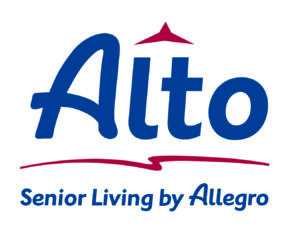Allegro Senior Living is using a modest, three-building acquisition to do some bigger things: enter a new state and launch a new brand, Alto Senior Living.
Prior to this acquisition, St. Louis-based Allegro operated 14 senior living buildings, with 12 in Florida and one each in Kentucky and Missouri. Most of these are large properties that include an independent living component, while the Alto brand will consist of smaller communities that do not have independent living, Allegro President and COO Douglas Schiffer (pictured above) told Senior Housing News.

The three newly acquired buildings fit this mold; they all offer assisted living and memory care and are fewer than 100 units. They are located in the Georgia communities of Alpharetta, Buckhead and Marietta, Allegro stated in a press release issued Tuesday. The Alpharetta building is 72 units, the Buckhead building is 68 units, and the Marietta building is 55 units.
Allegro will handle day-to-day management of the buildings, which were acquired through a joint venture with Artemis Real Estate Partners, a Washington, D.C.-based real estate investment management firm. Schiffer declined to share financial details of the transaction.
While representing a new direction for the company, the launch of Alto—Italian for “high,” and a musical term like Allegro—has been a while in the making.
“We had talked internally about creating an Allegro-light model, for lack of a better term,” Schiffer said. “Not a 175- or 200-unit property, but something smaller.”
This concept was appealing in part because it’s difficult to find 8 to 11 acres for development, which is needed for the typical Allegro model. Furthermore, there is a current market opportunity to acquire assisted living and memory care buildings, he said. This is due in large measure to the fact that distressed properties are coming up for sale, as new developers in the space struggle and as occupancy concerns grow more acute.
“It’s an industry that’s maturing, but it’s one that folks think is a real estate play,” Schiffer said. “It’s more operations, in my opinion … we’ve seen beautiful properties with not-great management struggle, and middling properties with great management do really well.”
With this in mind, the company is willing to be opportunistic in growing the Alto portfolio, acquiring more value-add properties like those in Georgia. They were all constructed between 1998 and 2000, and they will undergo significant renovations.
“With our existing investor base, if properties become available, then I see the opportunity to continue to build the Alto brand,” Schiffer said.
While he sees Alto growing primarily through acquisitions, he is not opposed to ground-up development of an Alto community on “the right piece of dirt with the right demographics.” However, when it comes to both Allegro- and Alto-branded properties, a careful pace of growth is the goal. Schiffer is happy with Allegro being a relatively small, “boutique” operator.
There are a few existing Allegro buildings that fit the Alto profile, but they will not be rebranded. Alto will have its own logo, but it will be largely enmeshed within the existing Allegro framework, including having the same executive leadership.
“In my view, [Alto is] a brand that is specific to a property and specific to a location, but the core values, the core people, the mission and vision and all those good things … are Allegro,” Schiffer said. “The same expectations will run throughout.”
Written by Tim Mullaney


